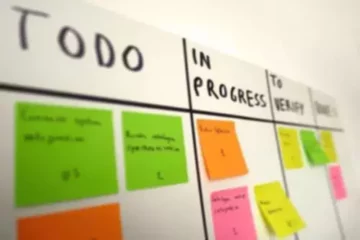Spiral is right for high-stakes initiatives, such as protection and aerospace software, where threat management is a top priority. It can additionally be used for tasks requiring intensive testing and high quality assurance to ensure performance and safety compliance. SDLC is a course of followed for software building within a software program https://deveducation.com/ group. SDLC consists of a precise plan that describes tips on how to develop, maintain, replace, and enhance specific software program. The life cycle defines a method for bettering the standard of software program and the all-around improvement course of.
It’s a high risk method, however typically it is preferable for small projects and groups. This offshoot of the broad family of Agile methodologies acts characteristic by characteristic (akin to consumer stories in Scrum). After an overall model is constructed, it’s split into a listing of features, every of which can be implemented within software development life cycle definition a 2-week dash. The three subsequent phases are to plan by function (assigning ownership as of classes) – design by characteristic – and construct by feature in small, dynamically staffed groups. As the name implies, Water-Scrum-Fall (otherwise generally recognized as Wagile) is the combination of waterfall with Scrum. Whereas, by now, many developer teams are comfortable working with Agile, the business side of the processes typically tends to gravitate towards the extra traditional fashions.

Cross-training team members in different areas of the project helps create a extra resilient team and ensures continuity if somebody leaves. Proactively establish, assess, and mitigate dangers throughout the project lifecycle. Establish contingency plans for high-impact risks and regularly review the danger register to ensure it remains present. This can range from a easy installation on a single laptop to a complex rollout across a quantity of servers and areas. The major deliverable from this phase is the precise source code for the application, along with documentation that explains how the code works.
The Software Program Development Life Cycle continues to evolve as expertise advances and enterprise needs change. Whereas the fundamental phases stay constant, how organizations implement them varies extensively primarily based on project necessities, team capabilities, and organizational culture. For this, builders use a particular programming code as per the design in the DDS. Therefore, it’s important for the coders to observe the protocols set by the affiliation.
Modern SDLC frameworks such as DevOps and Agile encourage cross-functional organizations to share obligations across these phases conducted in parallel. Whereas the necessities analysis and design selections are already outlined, feedback from the event teams is reviewed for potential change in course of the design strategies. Regular usability testing and user feedback sessions may help ensure the ultimate product meets person needs and expectations. Outputs from the design section usually embody architectural diagrams, database schemas, interface designs, and detailed technical specifications.

The big step is creating a detailed project plan document and work breakdown construction that outlines the requirements. The Software Improvement Lifecycle Specialization from the College of Minnesota is designed for beginner software engineers who want a deeper understanding of Agile and Lean software development methodologies. The most important distinction between the 2 SDLC methodologies lies by way of prioritizing customer satisfaction.
It emphasizes collaboration, automation, steady integration, steady delivery (CI/CD), and monitoring throughout the software development lifecycle. Its large reputation is evidenced by the variety of firms offering DevOps as a Service (DaaS). Agile promotes shut collaboration between development groups and prospects throughout the project.

That applies the same to the capabilities; a extremely skilled team may thrive in iterative or hybrid environments, while junior groups could carry out higher with inflexible, well-defined workflows. New expectations around delivering more-regular software program changes were a giant motivation for creating DevOps. Desktop applications were being replaced by net and cellular applications, and as an alternative of delivering bodily media (CDs or DVDs), firms started offering Software as a Service (SaaS) over the web. As technology leaders of the 1990s began realizing that the Waterfall method had a bent to produce lengthy and dear enterprise outcomes, they began looking for extra versatile alternatives.
Some projects are extra inflexible, and change isn’t most well-liked or discouraged. Others, nonetheless, are more complicated and require highly expert teams and collaboration. What was your greatest or worst, or both sorts of software development experience?
The upkeep stage of the software program improvement life cycle protects in opposition to dangers like these. Throughout this stage, engineers look ahead to problems in manufacturing and reply after they come up. Making a brand new software or utility version available to users requires transferring it into a manufacturing setting. This takes place during the deployment stage of the software program development life cycle. Unlock the key phases of software creation with our deep dive into the software program growth life cycle.
Lean manufacturing rules encourage Lean Software Improvement and purpose to maximize worth while minimizing waste. It emphasizes delivering value to prospects quickly, optimizing the whole process, and empowering teams to continuously enhance. Agile values the supply of working software as the first measure of progress. While documentation is necessary, Agile encourages groups to concentrate on delivering tangible value to customers through functional software program. Furthermore, the model’s linear nature meant that suggestions loops between stakeholders and developers were restricted.
Ultimately, the team is empowered to be self-sufficient and take ownership of software program growth, shipping, and support. They use Steady Delivery (CD) for frequent releases and to maintain a well-tested and high-quality codebase. In Accordance to the Waterfall method, the software program improvement process goes by way of all the SDLC phases with no overlapping and consists of a single improvement cycle. According to the truth that it is a linear-sequential life cycle mannequin, any phase in the development process can start only if the previous one is full. Groups are massive and everyone on the staff (business analysts, architects, builders, checks, operations, and so on.) all work inside their own silos.
The mannequin is inherently risk-driven, meaning that dangers are constantly assessed and addressed all through the development life cycle. The Waterfall mannequin has been a foundational method to software improvement for decades. While it is probably not probably the most flexible mannequin within the face of changing necessities, its simplicity and predictability make it suitable for certain kinds of tasks. Understanding the project requirements and constraints is essential to deciding whether the Waterfall mannequin is the proper fit for a specific improvement endeavor. As the software program improvement panorama evolves, newer models and methodologies proceed to emerge, offering alternative approaches to satisfy the calls for of a rapidly changing trade. The software growth lifecycle (SDLC) is a course of for coding, designing, and managing software program.
real estate saranda Armani Stronger With You Parfum